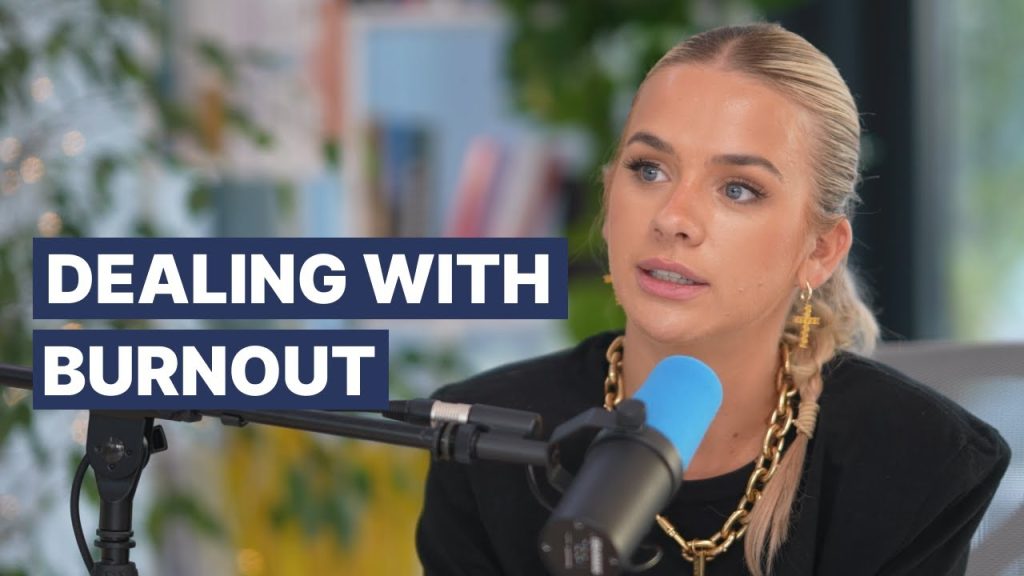Table of Contents
What is executive burnout and how is it relevant to business performance?
Executive burnout refers to a state of chronic physical and emotional exhaustion experienced by high-level executives, such as CEOs and business leaders. It is characterised by a depletion of energy, increased cynicism, and reduced effectiveness in the workplace. Understanding executive burnout is crucial as it sheds light on its relevance to business performance and the overall success of organisations.
Becoming aware of the impact of executive burnout on businesses is of significant importance for several reasons, according to a Deloitte survey. Firstly, executives hold key leadership roles and have a direct influence on the strategic direction, decision-making processes, and overall performance of the company. When executives experience burnout, their ability to make sound judgments and lead effectively is compromised, leading to negative consequences for the organisation as a whole.
Furthermore, executives often serve as role models and set the tone for the organisational culture. If they are burned out and disengaged, it can have a ripple effect on employees, leading to decreased morale, motivation, productivity, and higher turnover rates throughout the company. The impact of executive burnout extends beyond the individual and permeates the entire organisational ecosystem.

Case Study:
Jane had it all. She was the CEO of her own small but successful advertising agency in London, with 10 employees working under her and a great portfolio of clients from around the world.
But as time went on, she found that there were not enough hours in a day to manage everything – from managing her team to completing projects for clients. As chronic stress mounted up and the demands of running an agency increased, so did Jane’s risk of burnout.
At first she tried to push through it, telling herself that this was just what life was like as a CEO – gritting your teeth and pushing through despite feeling overwhelmed and tired most days. But soon enough, even with self-care practices like yoga or meditation thrown into the mix, mental fatigue started turning into anxiety which then turned into depression until eventually Jane could no longer ignore how bad things had gotten – both mentally and physically.
Her health deteriorated rapidly due to constantly being overworked resulting in an inability to think clearly or make sound decisions for her business anymore; leading to a loss of clients one by one as well as some employees leaving due to lack of support from their boss and toxic atmosphere. It wasn’t until Jane became completely unable to continue working that she realised how serious mental health issues, including substance abuse, really can be – especially when you’re at the top!
Following months off work spent focusing on healing both body and mind through therapy sessions with psychologists as well as articles and books about entrepreneurial education regarding work/life balance tips; eventually Jane slowly made strides towards recovery before finally returning back home stronger than ever before – having learned valuable lessons along the way about priorities such as taking care of yourself above everything else if you want long-term success in life!
The effects of executive burnout, including work-related stress, can have significant implications for business performance. The well-being and effectiveness of executives directly affect the productivity, decision-making, and overall success of the organisation. By recognising and addressing executive burnout, businesses can proactively mitigate its negative impact and create an environment conducive to sustained performance and growth.
Executive Burnout: Causes, Symptoms, and Impact
Executive burnout is a state of chronic physical and emotional exhaustion, including feelings of exhaustion, experienced by high-level executives, such as CEOs and business leaders. It is characterised by a sense of overwhelming fatigue, cynicism, and a decreased sense of accomplishment. Understanding the causes, symptoms, and impact of executive burnout is essential for recognizing and addressing this issue effectively.
Definition and characteristics of executive burnout
Executive burnout refers to a state of chronic physical and emotional exhaustion experienced by high-level executives, such as CEOs and business leaders. It is a result of prolonged and intense workplace stress, often arising from the demanding nature of executive roles. The following are the key characteristics of executive burnout:
- Overwhelming fatigue: Executives experiencing burnout often feel an extreme and persistent sense of exhaustion, both physically and mentally. This exhaustion may persist despite adequate rest and can impact their overall energy levels and ability to perform effectively.
- Cynicism and detachment: Burnout can lead to a sense of cynicism and detachment from work-related tasks, colleagues, and the organisation as a whole. Executives may develop a negative and detached attitude towards their work, losing their initial passion and motivation.
- Reduced effectiveness and performance: As burnout takes its toll, executives may experience a decline in their ability to perform at their best. They may struggle to concentrate, make decisions, and meet their professional responsibilities, leading to a decrease in their overall effectiveness as leaders.
- Diminished sense of personal achievement: Executives affected by burnout often experience a diminished sense of personal accomplishment and satisfaction in their work. Despite their achievements, they may feel a sense of unfulfillment or that their efforts are not making a meaningful impact.
Physical and emotional symptoms: Executive burnout can manifest in various physical and emotional symptoms, including chronic fatigue, insomnia, irritability, anxiety, depression, and a weakened immune system. These symptoms, along with headaches, can further exacerbate the negative impact on executive well-being and performance.
The Link Between Executive Burnout and Business Performance

Executive burnout can have a huge impact on business performance, leaving critical aspects of leadership and organisational effectiveness in jeopardy. Let’s delve into the key areas where executive burnout can affect business performance, as identified by the World Health Organization. Prepare to be surprised.
Decline in decision-making abilities
- Burnout can lead to fatigue, mental exhaustion, and decreased cognitive functioning, which impairs an executive’s ability to make sound decisions.
- Example: Imagine an executive who is exhausted and overwhelmed by constant work demands. They may struggle to prioritise tasks effectively and make right decisions, potentially leading to poor choices or missed opportunities for the business. For instance, they might overlook crucial information or fail to identify potential risks, which can impact the company’s competitiveness and financial performance.
Impaired Strategic Thinking
- Excessive exhaustion isn’t just a temporary inconvenience— it sabotages a leader’s ability to analyse situations, the ability to think creatively, and the ability to zoom out and assess the big picture. As a result, it can severely limit an executive’s issue-solving abilities and long-term planning capabilities.
- Example: Consider an executive who is experiencing burnout and lacks the mental clarity and focus required for strategic thinking. They may struggle to devise innovative strategies to adapt to changing market dynamics or identify new growth opportunities. Consequently, the business may fall behind competitors who can anticipate industry shifts and capitalise on emerging trends.
Reduced productivity, efficiency, and creativity
- Burnout drains executives’ energy and motivation, leading to decreased productivity and efficiency in their work.
- Executives overwhelmed by burnout may experience difficulty in managing their workload, resulting in delays, missed deadlines, and decreased output.
- Creativity and innovation are stifled as burnout diminishes executives’ ability to think outside the box and generate fresh ideas.
Negative impact on employee morale, engagement, and retention
- Executives serve as role models within organisations, and their well-being directly influences the morale, engagement, and retention of employees.
- Burnout in executives can create a negative work environment, affecting the motivation and commitment of the entire workforce.
- High levels of executive burnout can contribute to increased turnover rates and challenges in attracting and retaining talented employees.
Struggling with Leadership Effectiveness and Communication
- Burnout diminishes executives’ ability to lead effectively, as they may struggle with clear communication, collaboration, and providing guidance to their teams.
- Executives experiencing burnout may exhibit decreased empathy, increased irritability, and difficulty in building and maintaining relationships, leading to strained dynamics within the organisation.
Increased risk of errors, poor judgement, and costly mistakes
- The cognitive and emotional toll of burnout increases the likelihood of errors, poor judgment, and costly mistakes.
- Executives experiencing burnout may make rash decisions, overlook critical details, and demonstrate impaired judgement, leading to financial losses, damaged reputation, and legal implications.
Real-Life Examples of Executive Burnout and its Consequences
In today’s world, it’s clear that leaders are looking for more than just a paycheck – they want a fulfilling life both on and off the job.
A Deloitte study shows that around 70% of high-level executives are seriously considering quitting their current roles, largely due to help with their emotional well-being.
2022 has brought with it a wave of CEO resignations from major corporations like Amazon, Starbucks, Pinterest, and American Airlines.
According to press releases, many of these high-powered executives are seeking new challenges, better cultural fits, and a work/life balance that allows them to thrive both in and out of the office. For many, financial stability gives them the freedom to chart their own career paths – a luxury not always afforded to entry-level workers.
The consequences of introducing a new CEO can be tragic for the workforce, just like in the case of Amazon, whose new CEO announced job cuts up to at least 27,000.
Case Study: Elon Musk
Elon Musk, the renowned entrepreneur and CEO of Tesla, SpaceX, and other ventures, is a prominent example of a high-profile CEO who has publicly discussed his struggles with burnout.
Musk is known for his relentless work ethic and ambitious goals, which have propelled him to great success. However, his demanding schedule and high-pressure responsibilities have taken a toll on his well-being.
Burnout Symptoms and Public Remarks:
Musk has openly acknowledged experiencing burnout and its effects on his mental and physical health.
In an interview with The New York Times in 2018, he revealed that he had been working up to 120 hours per week, suffering from sleep deprivation, and relying on sleeping pills to cope.
Musk admitted that the stress had caused him to exhibit erratic behavior and emotional outbursts, which raised concerns among Tesla shareholders and board members.
Repercussions:
- Stock Price Volatility: Musk’s public remarks and behaviour during his burnout period had a significant impact on Tesla’s stock price. For instance, after tweeting about taking Tesla private in August 2018, the company’s stock experienced substantial volatility, with a notable decline and subsequent rebound. Such incidents demonstrated how CEO burnout can create uncertainty and affect investor confidence.
- Investor Concerns and Board Intervention: Musk’s burnout-related behaviour prompted concerns among Tesla’s board members and major shareholders. They worried about the company’s stability and questioned Musk’s ability to lead effectively. As a result, the board was compelled to intervene and enforce stricter oversight, urging Musk to delegate more responsibilities and prioritise self-care.
- Legal Troubles: Musk’s burnout-induced behaviour also had legal ramifications. In 2018, the U.S. Securities and Exchange Commission (SEC) filed a lawsuit against Musk, alleging securities fraud related to his tweet about taking Tesla private. The SEC sought to remove Musk from his position as CEO, highlighting how executive burnout can lead to poor judgement and legal repercussions.
- Personal Well-being and Work-Life Balance: Musk’s burnout served as a stark reminder of the toll excessive work demands can take on an individual’s well-being. It prompted discussions about work-life balance and the need for CEOs to prioritise self-care to avoid long-term negative effects on their mental and physical health.
Musk’s case highlights the need for companies to address executive burnout, promote work-life balance, and support mental health. Early recognition, open communication, and stress management resources are crucial in mitigating the risks of burnout.
Case Study: Grace Beverly

Grace Beverly, the founder of TALA, is an inspiring entrepreneur whose sportswear brand has made £10 million within the first 2 years of its existence.
Grace launched her business while still studying at the University of Oxford.Her journey towards success has not been without its challenges, and she has experienced the profound effects of burnout along the way.
Repercussions:
- Continuous drive and dedication: Grace was determined to build a brand that aligned with her values of sustainability and inclusivity. She worked tirelessly to develop TALA, a sustainable and affordable activewear brand, without compromising on quality.
- Mounting pressure: As TALA gained popularity, the pressure to meet customer demands and maintain the brand’s reputation increased. Grace found herself juggling numerous responsibilities, including overseeing production, managing the supply chain, and leading a team.
- Neglecting self-care: In the pursuit of success, Grace pushed herself to the limit. She often sacrificed personal time, relaxation, and self-care activities to ensure the growth and success of her business. This relentless work ethic took a toll on her physical and mental well-being.
- Physical and mental exhaustion: Grace experienced physical exhaustion due to long hours, frequent travel, and a demanding schedule. She also faced mental exhaustion, constantly striving for perfection and feeling the weight of responsibility on her shoulders.
- Loss of motivation: Burnout significantly impacted Grace’s motivation and passion for her work. She started feeling disconnected from the brand she had built and struggled to find joy in her accomplishments.
Grace recognised the toll burnout had taken on her life and the importance of prioritizing her well-being. She took a step back from her responsibilities and allowed herself time to recover and recharge.
Grace began incorporating self-care practices into her routine, including regular exercise, mindfulness, and spending time with loved ones. She acknowledged that taking care of herself was not only essential for her well-being but also crucial for the sustainability and success of her business.
Grace openly shared her experience with burnout and emphasized the importance of mental health in entrepreneurship. She encouraged others to prioritise self-care, set boundaries, and seek support when needed.
Grace Beverly’s journey is a reminder that burnout can affect even the most driven and accomplished individuals. Her experience serves as an inspiration for entrepreneurs and professionals alike to prioritize their well-being and strive for a healthy work-life balance.
Financial consequences of burnout
It may not be the first thing that comes to mind, but executive burnout can have wide-ranging financial consequences for businesses.
From decreased productivity and decision-making to increased healthcare costs, employee turnover, recruitment expenses, and damaged reputation, the financial toll can be substantial. Here are a few real life examples of how burnout devastates businesses on the financial side.
- Executive burnout can result in reduced productivity and impaired decision-making abilities. When executives are physically and mentally drained, their performance suffers, leading to suboptimal outcomes. Example: In 2011, the CEO of Best Buy, Brian Dunn, resigned due to burnout. Under his leadership, the company faced declining sales and profits, partly attributed to his inability to adapt to the changing retail landscape. His burnout likely affected his decision-making and strategic planning, leading to poor performance and financial setbacks for the company.
- Increased healthcare costs and absenteeism: Burnout often manifests as physical and mental health issues. Executives experiencing burnout may face higher healthcare costs due to increased medical visits, therapies, and medications. Additionally, they may need to take more sick leave or extended time off work to recover, resulting in reduced productivity and increased costs associated with temporary replacements or decreased output. Example: In 2019, Jack Dorsey, the CEO of Twitter, took a six-month sabbatical to address burnout. This period of absence created uncertainty and disrupted the company’s operations. It required additional resources to manage the CEO’s workload and potentially led to decreased productivity and financial strain for Twitter.
- High levels of stress and burnout can create a toxic work environment, leading to increased employee turnover rates. Losing talented employees and constantly recruiting and training replacements can be costly, both in terms of direct expenses and the loss of knowledge and experience. Example: Uber, the ride-sharing giant, faced a series of scandals in 2017, which resulted in the resignation of its CEO, Travis Kalanick. Kalanick’s leadership style and the company’s toxic work culture contributed to employee burnout and dissatisfaction. The high turnover rate among executives and employees not only affected the company’s reputation but also incurred significant recruitment and onboarding costs.
- Damaged reputation and customer trust: When executives are overwhelmed, they may fail to address customer concerns promptly or make decisions that negatively impact customer experience. This can erode customer trust, damage the company’s reputation, and result in reduced sales and customer loyalty. Example: In 2015, Volkswagen faced a major scandal when it was revealed that the company had installed software in its diesel vehicles to cheat on emissions tests. The CEO at the time, Martin Winterkorn, was known for his demanding leadership style, which likely contributed to the intense pressure on employees and potential burnout. The scandal severely damaged Volkswagen’s reputation, leading to a significant decline in sales and a substantial financial impact.
As an entrepreneur, or a leader you cannot afford to ignore the psychological hazards of executive burnout. Apart from affecting mental health, it can wreak havoc on your bottom line- causing significant financial losses for your business.

Addressing Executive Burnout: The Happy CEO Executive Burnout Program
The Happy CEO Executive Burnout Program is a comprehensive solution designed to address executive burnout and support the wellbeing and effectiveness of CEOs, business owners, and ambitious decision-makers.
This program offers a structured approach to help executives overcome burnout, achieve rapid transformation, and experience a renewed sense of charisma, freedom, and overall wellbeing.
The program begins with an overview that outlines its key components and methodologies. It provides executives with a clear understanding of how the program can effectively address burnout and restore their energy, motivation, and fulfilment in both their personal and professional lives.
The Happy CEO Executive Burnout Program is specifically tailored to meet the needs of busy decision-makers, action-takers, CEOs, business owners, and ambitious executives who may be successful on the outside but don’t always feel that way on the inside.
It serves individuals who are ready for a rapid transformation and are seeking to break free from the chains of burnout, allowing them to embrace their role as charismatic leaders.
Executives who commit to the program can expect a range of benefits such as regained sense of self-worth, better ability to stay calm under pressure, facing difficult situations with sense of calm and ease.
Freedom is another significant benefit of the program. Executives who engage in the Happy CEO Executive Burnout Program often experience a newfound sense of freedom and liberation from the burdens of burnout.
They gain the tools and strategies to create a healthier work-life balance, establish boundaries, and prioritise self-care.
As a Wellbeing Strategist, I can confidently say that the Happy CEO Executive Burnout Program is a game-changer for executives looking to live and work well and reignite their passion for life.
My approach has been tried and tested by previous participants who have shared their success stories and vouch for the effectiveness of the process. Through their inspiring success stories, you’ll see first-hand how this program can positively impact your wellbeing and the success of your business.
Strategies for Preventing and Managing Executive Burnout
Executive burnout is a serious issue that requires immediate action. To prevent and manage this challenge, it’s crucial to implement effective strategies that prioritize wellbeing, foster a supportive work environment, and promote stress management.
With the right approach, organizations can help executives maintain their overall wellbeing, reduce the risk of burnout, and achieve long-term success. Let’s explore some key approaches:
Prioritising self-care and work-life balance for executives: Executives should be encouraged to prioritise their physical and mental health by engaging in activities that promote self-care. This may include regular exercise, adequate sleep, relaxation techniques, and pursuing personal hobbies.
It is crucial to set clear boundaries between work and personal life, especially when working from home, ensuring executives have dedicated time for rest, rejuvenation, and personal activities.
Creating a supportive organisational culture that promotes wellbeing: Organisations can foster a culture that values work-life balance, mental health, and overall wellbeing. This can be achieved by setting an example by company owners, and leaders.
By promoting a healthy work environment that encourages open communication, collaboration, and mutual support among team members, organisations can cultivate an atmosphere where executives feel supported in managing their wellbeing.
Implementing stress management initiatives and mental health support: Organisations should offer stress management programs, workshops, and training to equip executives with effective coping mechanisms, tools and stress reduction techniques.
Additionally, providing access to mental health resources, such as counselling services or employee assistance programs, demonstrates a commitment to supporting executives in managing their mental well-being.
Encouraging effective delegation, time management, and workload distribution: Executives can benefit from learning and practising effective delegation, time management, and workload distribution strategies.
By encouraging executives to delegate tasks, empower their teams, and distribute workload effectively, organisations can prevent overwhelming workloads and reduce the risk of burnout. Implementing efficient time management strategies, such as prioritisation and scheduling, can also help executives balance their responsibilities and avoid excessive work hours.
Promoting open communication and seeking support networks: Organisations should foster a culture of open communication where executives feel comfortable discussing their challenges, stressors, and concerns.
Encouraging executives to establish support networks, such as participating in peer groups, professional associations, or seeking mentorship, allows them to receive guidance, share experiences, and gain valuable insights and helpful perspectives. These networks can serve as valuable sources of support and encouragement during challenging times.
The ROI of Addressing Executive Burnout
Addressing executive burnout not only benefits the wellbeing of executives but also yields a return on investment (ROI) for the entire business. By quantifying the financial impact of executive burnout and recognizing the potential cost savings and long-term benefits, organisations can understand the value of prioritising executive wellbeing. Let’s explore the ROI of addressing executive burnout:
Quantifying the financial impact of executive burnout on businesses: Research shows that executive burnout can have substantial financial implications for organisations. By quantifying the costs associated with decreased productivity, increased absenteeism, turnover, and potential errors or mistakes resulting from burnout, organisations can gain a clear understanding of the monetary impact.
Cost savings through improved productivity, retention, and talent attraction: Addressing executive burnout contributes to cost savings by improving productivity and reducing the likelihood of turnover.
Executives who are well-supported and experience lower levels of burnout are more likely to be engaged, motivated, and productive, leading to enhanced performance and output.
Furthermore, organisations that prioritise executive wellbeing create an attractive work environment, making it easier to attract and retain top talent, resulting in cost savings associated with recruitment and onboarding.
Enhanced organisational reputation and stakeholder satisfaction: Taking proactive measures to address executive burnout can positively impact an organisation’s reputation and stakeholder satisfaction.
Organisations that prioritise executive wellbeing are viewed as socially responsible and caring, leading to increased trust and satisfaction among stakeholders, including employees, customers, investors, and partners.
A positive reputation can attract and retain clients, strengthen partnerships, and enhance the overall image of the organisation, contributing to long-term success.
Long-term benefits of investing in executive wellbeing: Investing in executive well-being yields long-term benefits for organisations. Executives who feel supported, valued, and balanced in their roles are more likely to make strategic decisions, foster innovation, and inspire their teams.
This, in turn, leads to improved business performance, increased employee morale, and a positive work culture. Additionally, prioritising executive wellbeing sets a precedent for the rest of the organisation, creating a ripple effect of enhanced satisfaction and performance at all levels.Recap of the impact of executive burnout
In summary, executive burnout has a significant impact on business performance, and understanding its causes, symptoms, and consequences is crucial. By addressing executive burnout, organisations can mitigate the negative effects and promote a healthier work environment.
The Happy CEO Executive Burnout Program offers a tailored solution for executives, providing rapid transformation, charisma, freedom, and increased sense of personal wellbeing.
Strategies for preventing and managing executive burnout include building awareness through psychoeducation, which helps executives understand their condition and gives power over it, allowing them to make effective changes. Moreover the program offers tools and a strategy of implementing it, so that executives are empowered to build healthy habits and a new success-ensuring identity.
Addressing executive burnout also yields a positive return on investment, including cost savings through improved productivity, retention, and talent attraction, enhanced organisational reputation and stakeholder satisfaction, and long-term benefits of investing in executive well-being. By recognizing the importance of addressing executive burnout, organisations can foster healthier work environments, enhance business performance, and sustain long-term success.








